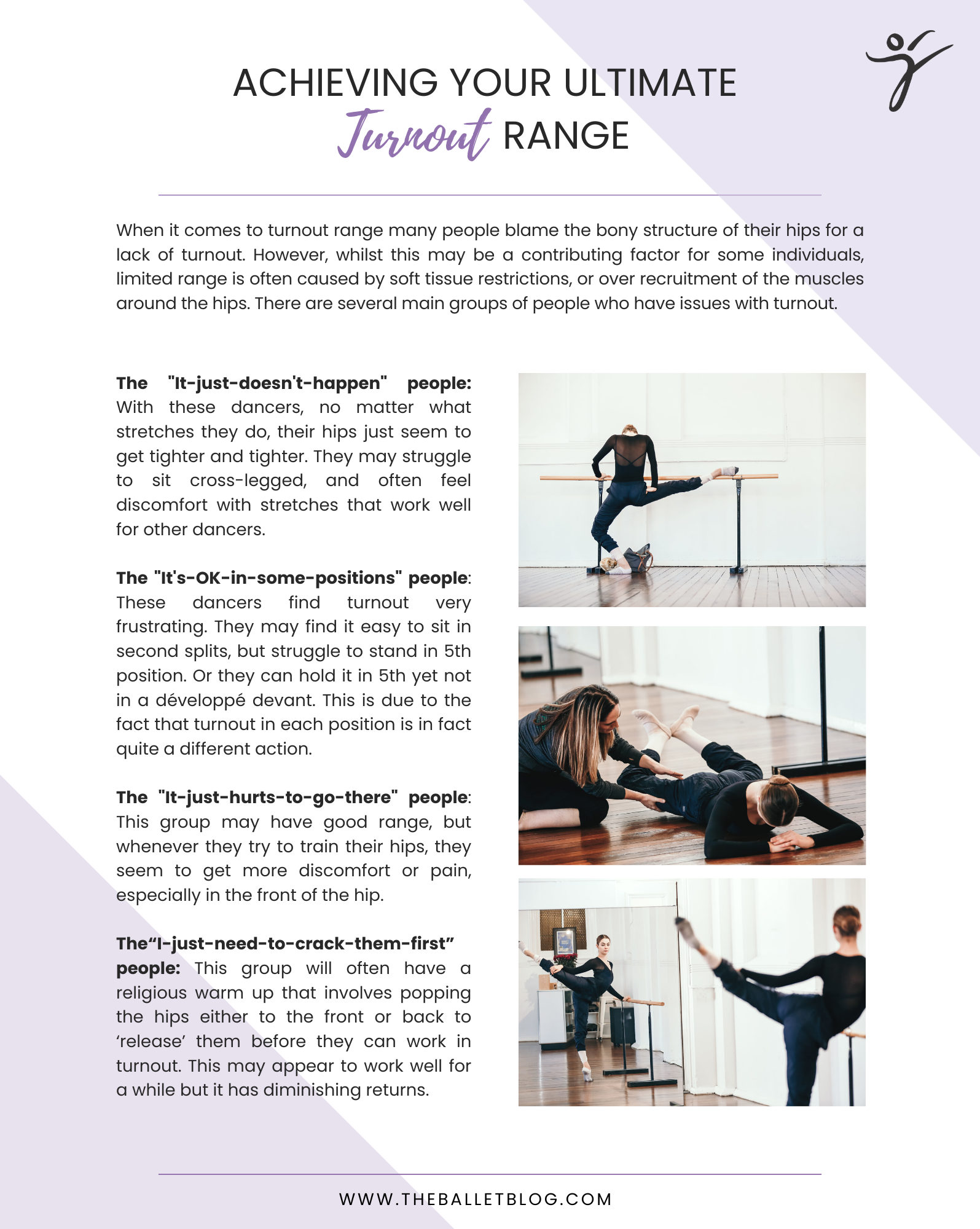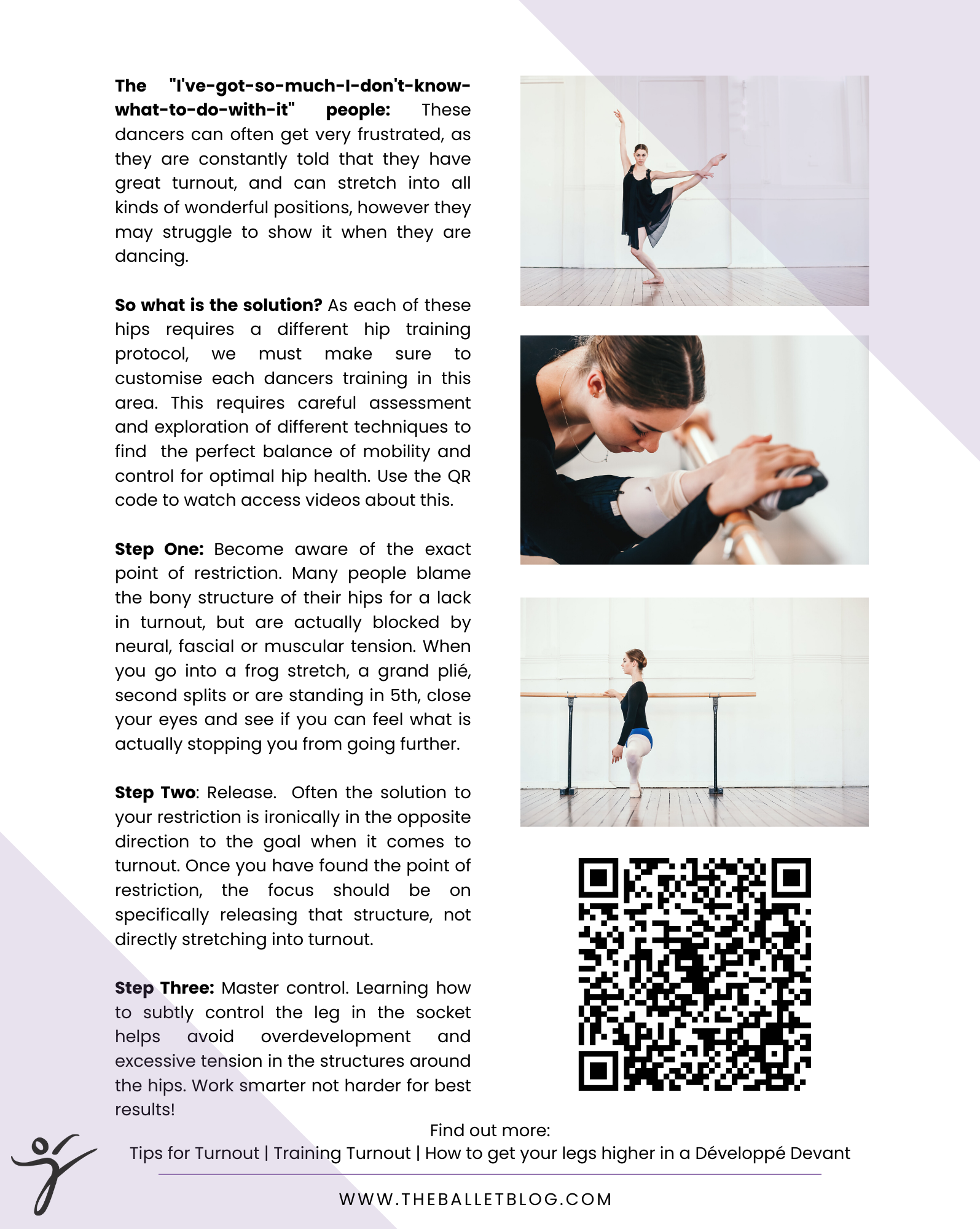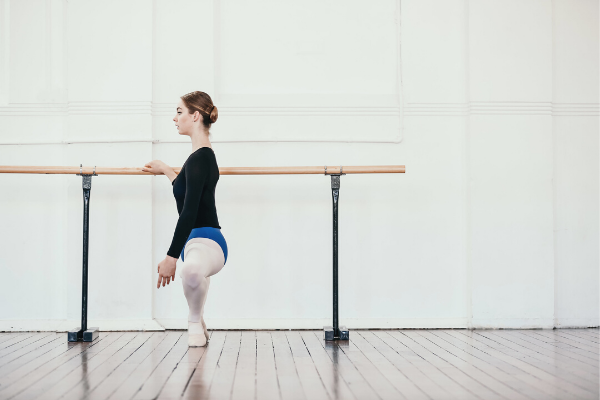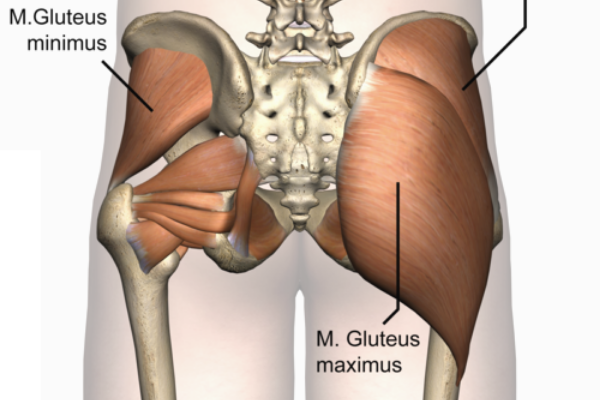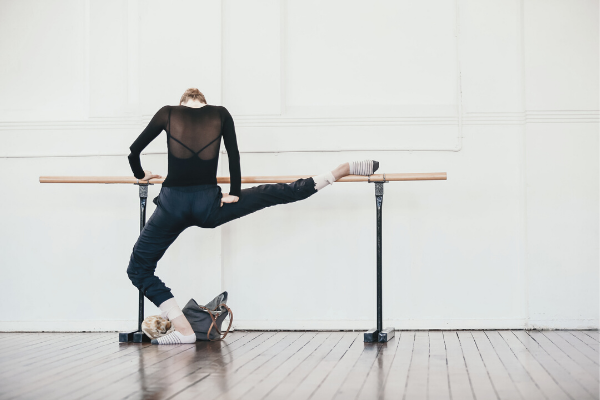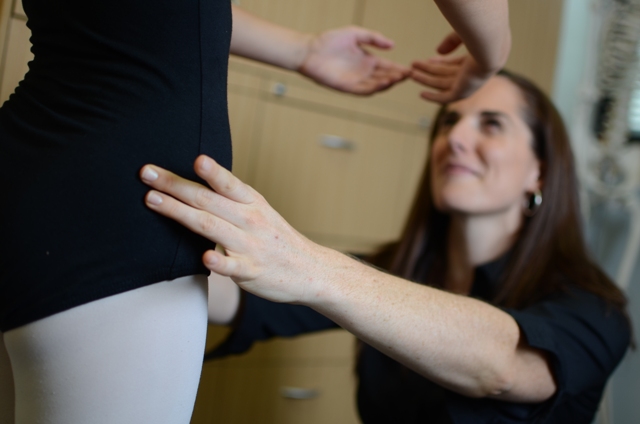- Free Articles
- Shop
- Workshops
- The Dance Educator Series
- L1 – The Fundamentals
- L2 – Pointe Intensive
- L2 – Flexibility Intensive
- L2 – Training Turnout in Tiny Dancers
- L3 – Foot & Ankle Injuries in Dancers – NEW
- L3 – Hip Injuries in Dancers
- L3 – How to Train Extreme Mobility Safely
- Upcoming Workshops
- Workshop FAQ’s
- Workshop Testimonials
- Host Application Form
- Dance Teacher & Health Professional Directory
- Members Areas
- Cart
- My Account
Achieving your Ultimate Turnout Range - Free PDF
When it comes to turnout range many people blame the bony structure of their hips for a lack of turnout. However, whilst this may be a contributing factor for some individuals, limited range is often caused by soft tissue restrictions, or over recruitment of the muscles around the hips. There are several main groups of people who have issues with turnout.
Training Turnout Resources
If you are looking to delve deeper into this topic, check out the following programs:
Tips for Turnout:This ‘Tips for Turnout Guide’ is a great starting point for anyone wanting to learn more about how to maximise turnout safely, and is the first resource in our Training Turnout Series. It gives you tips on improving your range, developing control of your standing leg and specific ways to increase the height of your développé devant.
Training Turnout: Deepen your exploration of the anatomy of the dancers’ hip with this unique Training Turnout eBook. As the second resource in our Training Turnout series this program is a great follow on from our Tips for Turnout Program. Learn how to assess and understand the structure of your own hips, strengthen standing leg turnout and turnout en fondu as well as develop extraordinary control in your adage.
Training Turnout in Tiny Dancers: If you are dance teacher, this is the perfect continued education course for you. In this systematic and comprehensive approach to training turnout in tiny dancers, Lisa and Beverly provide dance teachers with direct techniques to use in class to safely develop optimal range and control of motion in all dance students. This program begins by establishing strength and control in parallel, before adding on the control of rotation, which is hugely important in the long term health of dancers’ hips. Using elements of fun and creative play to bring scientific and detailed training programs into dance schools is a unique and effective way to help thousands of young students worldwide
Level One Dance Teacher and Therapist Training: This unique course covers a multitude of assessment and treatment techniques to individualise a dancers training. With special focusses on Postural Control, Core Stability, Flexibility, Basic Classical Technique, The Dancers Hip, Allegro, Spinal Mobility and Arabesques, it is suitable for anyone working closely with dancers.
Anatomy Posters: These A3 posters are a great addition to the studio, to make it easy for teachers to explain the anatomy behind the movement to dance students. With clear anatomical images and descriptions of how each muscle works in a dancer, they are an essential tool for training intelligent dancers.

